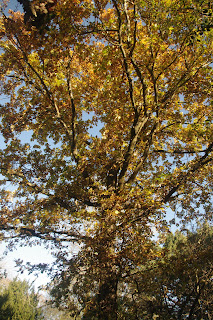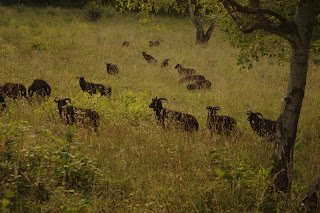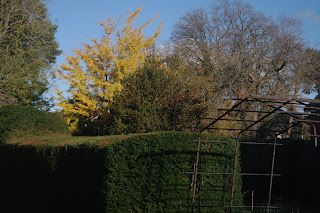Sit spot. Further to my last entry I've been thinking about other places where I make a point of sitting or standing to look at the view and contemplate life in general. Another would be the pillbox on the edge of Swyre in Dorset looking towards West Bexington and the Chesel Beach. The roof makes an excellent vantage point.
We holidayed near here when I was a child and I return to this spot whenever I visit this stretch of the coast. I suppose a convenient resting place with a vista makes an ideal sit spot. Then again it could be somewhere more secluded or anywhere where it's pleasant to pass the time and observe nature.
























